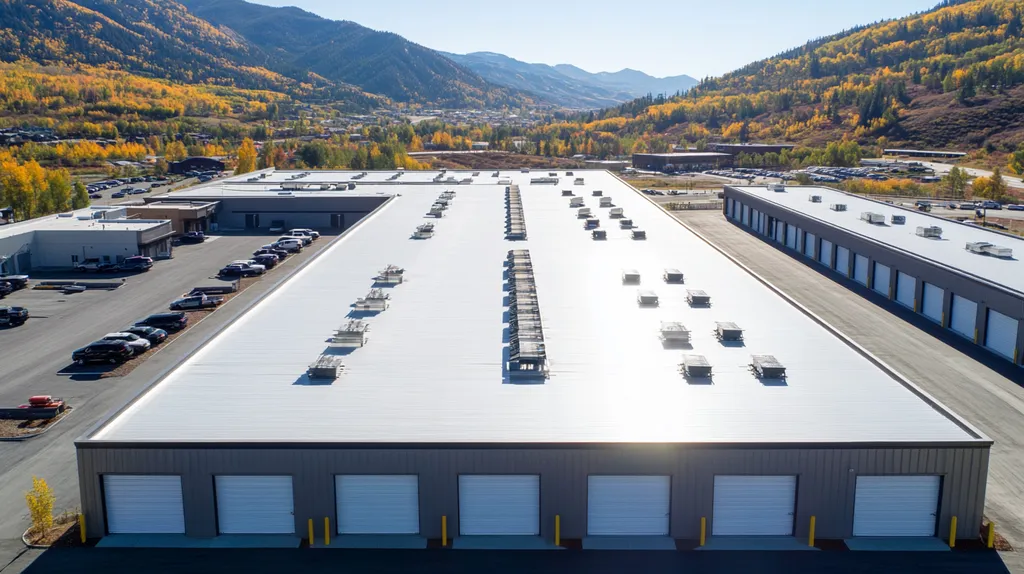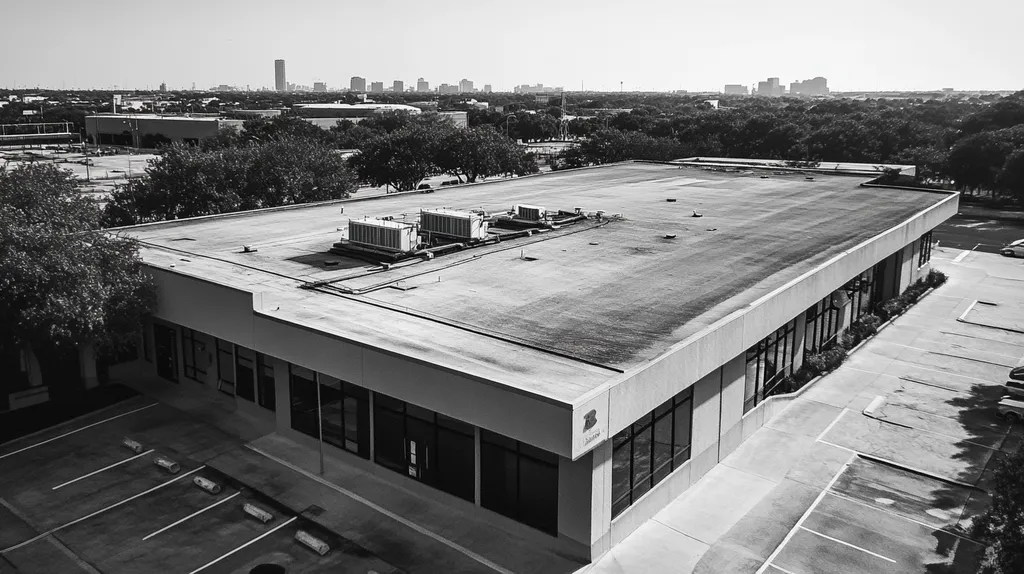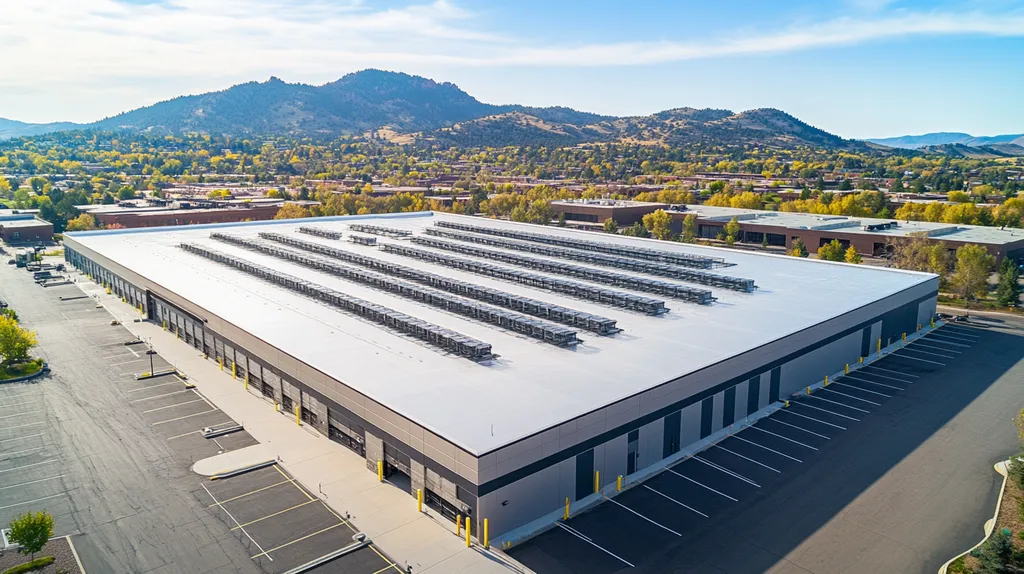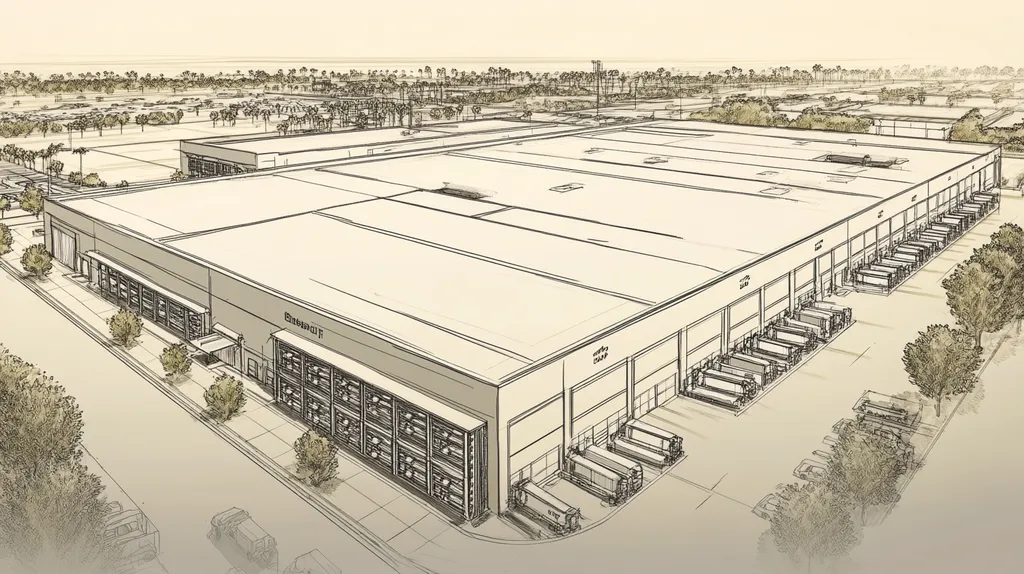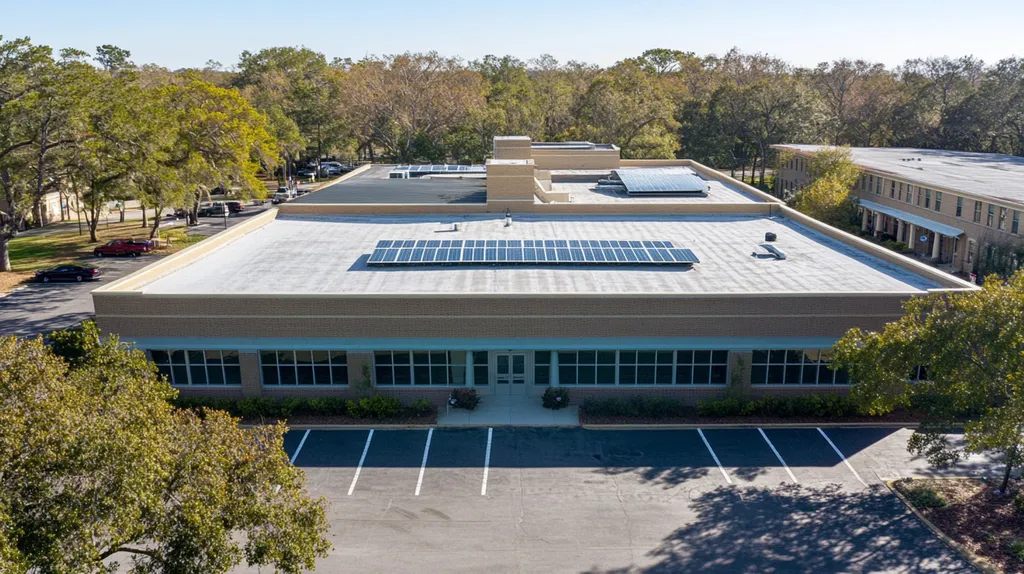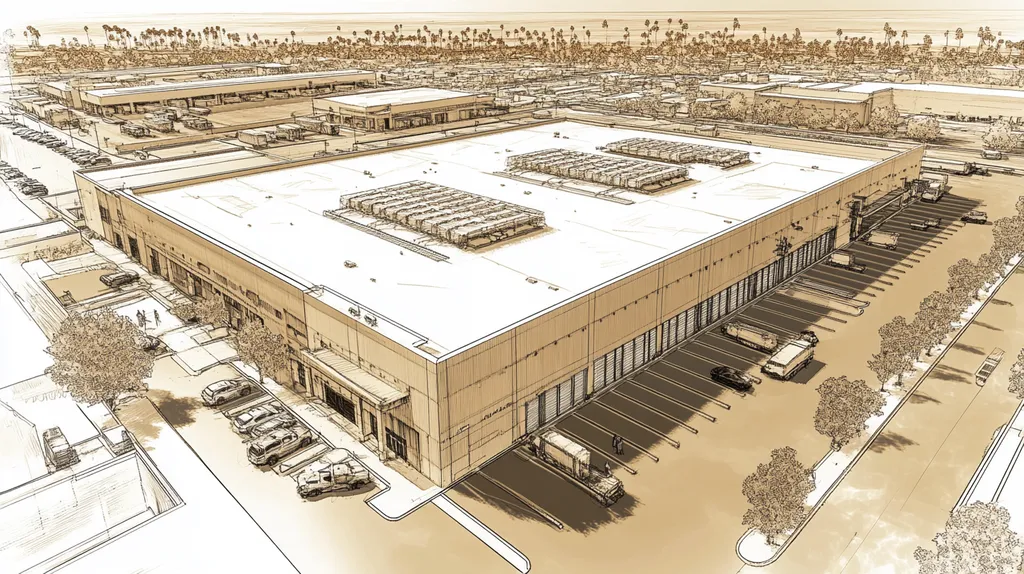Commercial roofing failures cost U.S. businesses over $2.5 billion annually, with 35% of these incidents directly linked to coating system incompatibility issues. For facility managers, understanding how coating systems interact with existing roof features is critical for preventing costly damage.
Recent industry studies show that proper coating selection and application can extend roof life by 15-20 years, while mismatched systems often fail within 24 months. The stakes are particularly high for buildings with complex HVAC systems or specialized equipment installations.
This comprehensive guide examines crucial factors in coating system evaluation, from material compatibility to environmental impacts, providing facility managers with actionable solutions for protecting their roofing investments.
SECTION 1: PERFORMANCE FACTORS
Selecting the right coating system for a commercial roof is fundamental to its longevity and effectiveness. Property managers need to understand that environmental conditions and the state of the current roof can significantly impact how well these coatings work. Research from the National Roofing Contractors Association shows that failing to ensure proper compatibility can lead to expensive failures, wasting both time and resources. Conducting early evaluations of environmental factors, load conditions, and application methods can greatly improve system performance and lifespan.
Assessment of Environmental and Load Conditions
Environmental conditions are vital when evaluating coating systems. Factors such as temperature shifts, humidity levels, and UV exposure can greatly influence the adhesion and flexibility of the coatings. For instance, regions with high UV exposure benefit from reflective coatings that minimize heat absorption, but these must still be compatible with the existing roofing material.
Load conditions, including the weight from foot traffic or equipment, also dictate which coatings are best suited for a given roof. Some coatings excel under heavier loads while others do not. Property managers should closely examine these variables to choose coatings that meet the specific requirements of their roofs.
An understanding of local weather trends is equally important. Areas susceptible to heavy rainfall or snow need coatings that not only resist moisture but also protect against potential damage. A thorough evaluation allows for informed decisions that can result in significant savings on repairs in the long run.
Key Action Items
Impact of Application Methods on System Longevity
The choice of application method greatly influences the durability of coating systems. A coat applied improperly can lead to issues like peeling or bubbling, thus diminishing the roofing system’s performance. For example, failing to clean the surface properly before application can hinder adhesion, leading to premature failures.
Timing is also essential. Coatings should ideally be applied in dry conditions and moderate temperatures. Extreme weather conditions during application can interfere with how well the coating cures, potentially reducing its effectiveness.
Recent advancements have led to new application technologies, such as spray-on coatings that provide consistent coverage. However, no matter the application method, adhering strictly to manufacturer guidelines is essential to maximize the coating’s life. Proper training for applicators ensures they utilize the best techniques. Facility managers should prioritize hiring skilled professionals to achieve optimal results and reduce future maintenance needs.
Key Action Items
Conclusion on Performance Factors
In conclusion, carefully assessing environmental conditions and selecting the appropriate application methods can significantly affect coating system performance. Facility managers who prioritize these factors are more likely to experience enhanced longevity and reduced repair costs. A thorough evaluation ensures that the chosen coating system effectively meets the demands of the existing roof while also boosting its overall functionality.
SECTION 2: FINANCIAL CONSIDERATIONS
Understanding the financial implications of coating systems is essential for successful roof management. Property managers often underestimate the ongoing costs associated with maintenance and reapplication, leading to unexpected budget challenges. A clear grasp of these financial aspects is crucial to making informed decisions and avoiding costly errors. This section delves into how to budget effectively and compares total costs to help managers navigate their investment choices.
Budgeting for Recurring Maintenance and Reapplication
Effective budgeting for regular maintenance and reapplication is vital for extending the lifespan of coating systems. These materials require ongoing care, with periodic inspections and touch-ups to ensure their continued effectiveness. Facility managers should establish a maintenance schedule based on the coating type and local environmental conditions.
For instance, an acrylic coating may need reapplication every five to seven years. Omitting these costs from the budget could result in urgent funding needs for unexpected repairs, disrupting financial planning.
To maintain financial stability, aim to allocate about 1-2% of the roof’s value annually for maintenance. This proactive approach will ensure that funds are available when needed, helping to prevent costly emergency repairs. Opting for higher-quality coatings can also decrease the frequency of reapplication, ultimately providing better long-term value.
Key Action Items
Total Cost of Ownership Versus Full Roof Replacement
When analyzing coating systems, it’s crucial to compare the total cost of ownership (TCO) to the expense of full roof replacement. While a coating system may appear to offer a lower initial investment, without proper management, costs can escalate over time. This comparison is essential for making informed financial decisions.
For example, although a roof replacement may require a more significant upfront investment, it typically offers a lifespan of 20 years or more. Conversely, coating systems might necessitate additional costs for maintenance and reapplication. Understanding this financial landscape helps in planning long-term budgets more effectively.
Calculating TCO involves factoring in installation expenses, ongoing maintenance, and potential financing costs. Facility managers should ensure their budget reflects these elements to present a clear financial picture to stakeholders. By evaluating TCO, decisions can focus on long-term value rather than just immediate costs.
Key Action Items
Long-Term Financial Benefits of Strategic Coating System Choices
Investing in high-quality coating systems can yield substantial long-term financial advantages that often outweigh initial expenditures. Quality coatings not only enhance energy efficiency but also lead to lower heating and cooling costs, translating to significant savings over time.
Moreover, a well-maintained roof adds value to the property. A roof in optimal condition may result in lower insurance premiums and increased lease rates, enhancing the facility’s overall market appeal.
Choosing coatings that address specific environmental challenges can amplify savings. For instance, UV-resistant coatings can extend a roof’s lifespan, reducing the need for costly replacements. In summary, assessing the long-term value of coating investments encourages more strategic financial choices.
Key Action Items
SECTION 3: COMPLIANCE REQUIREMENTS
Adhering to local and national roofing regulations is crucial for ensuring the long-term viability of a coating system. Ignoring these regulations can lead to severe consequences, such as hefty fines, legal troubles, and even roof failure. For example, neglecting to verify product compliance might void warranties and result in additional costs. Facility managers must navigate these regulatory waters carefully to secure effective and compliant roofing solutions.
Verification of Product Compliance and Manufacturer Warranties
Facility managers must ensure that all selected coating products comply with relevant codes and industry standards to guarantee that they perform as promised and remain covered by warranties. Many manufacturers provide essential documentation to affirm compliance, and missing out on this verification can jeopardize warranty claims in the future.
Each coating system includes specifications about its composition and intended use, with some components regulated by the Environmental Protection Agency (EPA) while others follow state and local codes. This complex regulatory landscape is crucial for safeguarding valuable investments.
Close collaboration with manufacturers is essential to ensure all chosen products meet compliance criteria. Understanding the warranty implications related to compliance is equally important; if a product fails due to non-compliance, the manufacturer may refuse to honor the warranty.
Key Action Items
Navigating Building Code and Insurance Requirements
Building codes dictate various aspects of roofing systems, including material choices, installation protocols, and safety measures. Facility managers must familiarize themselves with these regulations before starting any roofing project to avoid potential legal and insurance complications.
In many areas, commercial roofs must adhere to specific fire safety and energy efficiency standards. For instance, utilizing a roof coating that minimizes heat absorption can assist in meeting energy compliance while improving occupant comfort.
Insurance requirements often depend on compliance with local building codes. When damage occurs or claims arise, insurers usually request validation of compliance. Failure to provide the necessary documentation can lead to denied claims and unexpected costs.
Key Action Items
Ensuring Industry Standards and Best Practices
Understanding industry standards is vital for promoting the durability and effectiveness of coating systems. Organizations such as the National Roofing Contractors Association (NRCA) establish guidelines on best practices for product installation and maintenance. Facility managers should utilize these resources to improve roofing procedures.
Adopting best practices not only ensures compliance but also enhances system performance. For instance, following recommended installation techniques can significantly extend a coating’s lifespan. Attention to details like surface preparation and application environment is critical.
Staying informed about advancements in roofing technologies is essential. New materials frequently emerge that can improve compliance and performance. Choosing innovative solutions can equip facilities to meet evolving regulations and performance benchmarks.
Key Action Items
SECTION 4: RISK MANAGEMENT
Facility managers are confronted with essential decisions regarding the longevity and upkeep of commercial roofs. Choosing between coating systems and full roof replacement has significant implications for budgets and asset performance. Research indicates that opting for re-roofing can cost property owners 30% more than implementing a quality coating system. Evaluating the costs and benefits of these options is crucial for minimizing risks and maximizing roof durability.
Budgeting for Recurring Maintenance and Reapplication
Regular maintenance and reapplication are critical for ensuring that coating systems continue to provide effective protection. Facility managers should allocate budget for these vital costs, which encompass cleaning, repairs, and inspections. Annually, maintaining a coating system can range from 5% to 15% of its initial installation cost.
Underestimating these expenses can lead to financial strain. If a coating fails due to lack of maintenance, the cost of full roof replacement can escalate significantly. Proactively budgeting and planning for such expenses can facilitate long-term cost savings and prolong the service life of the roof.
Investing in a quality coating system, coupled with regular maintenance, can yield substantial returns. Some warranties may cover reapplication costs, further enhancing the value. By allocating funds responsibly for recurring expenses, facility managers can enhance roof integrity and prevent unexpected budget crises.
Key Action Items
Total Cost of Ownership Versus Full Roof Replacement
The total cost of ownership (TCO) for a commercial roof encompasses installation, maintenance, and potential replacement expenses. Generally, coating systems present a lower TCO compared to complete roof replacements. For instance, while replacing a roof can easily exceed $20 per square foot, a well-maintained coating system typically ranges from $5 to $10 per square foot.
Understanding TCO allows facility managers to make informed financial decisions. Coating systems can potentially extend a roof’s functional lifespan by 10 to 15 years at a fraction of the cost compared to a full replacement. Managers must evaluate the comprehensive financial impact beyond initial outlays.
Another significant factor to consider is the potential revenue loss during down time during replacement projects. Coating systems usually involve minimal disruption, enabling business operations to persist seamlessly. This aspect should be a key consideration in the decision-making process.
Key Action Items
Long-Term Implications of Roofing Decisions
Every roofing decision can have lasting impacts on operational costs and the property’s infrastructure. Coating systems often enhance energy efficiency, potentially leading to reduced HVAC costs. In regions with extreme weather, investing in high-quality coatings becomes essential for maintaining interior climate control.
Additionally, specific coating systems provide enhanced resistance to UV rays and thermal expansion, decreasing wear and tear over time. This durability can lead to fewer emergency repairs, which are typically costly and disruptive.
Facility managers should carefully evaluate these long-term advantages against the initial costs. Informed decisions can not only safeguard the physical structure but also enhance overall occupant satisfaction by ensuring comfort and safety. This analysis is especially urgent in competitive environments where operational stability is paramount.
As traditional roofing materials reach the end of their service life more rapidly, understanding the full range of coating interactions can significantly mitigate risks and position facilities for long-term success. This thoughtful approach ultimately protects financial interests and boosts asset value.
Key Action Items
SECTION 5: OPERATIONAL PROCEDURES
The successful implementation of a coating system relies heavily on rigorous operational procedures. Facility managers must prioritize safety and efficiency during the application process to avoid costly mistakes. According to the National Roofing Contractors Association, improper application can lead to extensive roof damage, resulting in thousands of dollars in repairs. By following best practices, managers can ensure seamless interactions between the new coating and existing roof features, extending the lifespan of the coating system.
Guidelines for Safe Handling and Worksite Operations
Establishing robust safety guidelines is essential during the coating application process. Workers should consistently wear personal protective equipment (PPE) like helmets, gloves, and respirators to minimize risks. Additionally, maintaining an organized worksite can help prevent hazards associated with slips, trips, and falls.
It’s crucial to provide proper training for all personnel involved in the application. Familiarity with the specific handling requirements for each type of coating material promotes safety and compliance with OSHA regulations.
Regular inspections of the worksite should be conducted to spot and mitigate potential dangers. Implementing pre-application meetings can enhance safety preparedness and communicate site-specific risks effectively. Facility managers must prioritize these protocols to protect both workers and the facility’s investment.
Key Action Items
Coordination with Contractors and Ongoing Quality Assurance
Effective collaboration with contractors is crucial for a successful coating application. Facility managers should choose experienced professionals knowledgeable about the specific roofing systems involved. Clear communication regarding project expectations, timelines, and quality standards strengthens this partnership.
Utilizing a detailed project schedule aids in keeping all parties aligned on progress and deadlines. Regular progress check-ins can quickly address any issues, preventing minor glitches from escalating. This proactive strategy helps keep the project on track while ensuring compliance with the highest industry standards.
Additionally, conducting ongoing quality assurance checks during application verifies adherence to specifications. These inspections should evaluate compatibility with existing roof features, surface preparation, and application uniformity. Addressing potential issues early can save significant time and cost.
Key Action Items
Documenting the Coating Application Process
Thorough documentation of the coating application is vital for future maintenance and warranty claims. A comprehensive record should include material specifications, application methods, and environmental conditions during installation. This documentation provides a valuable reference for facility managers in the future.
Having a systematic logging process aids in maintaining roof performance and tracking the timeline of the coating system application. This information allows for effective decision-making regarding necessary repairs or future interventions.
Additionally, documenting all inspections or quality assurance checks during the application helps in future insurance claims or warranty considerations. In essence, complete documentation is an investment in the building’s longevity.
Key Action Items
SECTION 5: OPERATIONAL PROCEDURES
The success of implementing a coating system relies on strict adherence to operational procedures. For facility managers, prioritizing safety and efficiency during the application process is crucial to avoid costly errors. Reports from the National Roofing Contractors Association indicate that improper application can lead to significant roof damage, potentially costing owners thousands in repairs. Following best practices fosters a seamless interaction with existing roof features, prolonging the new coating system’s lifespan.
Guidelines for Safe Handling and Worksite Operations
Establishing thorough safety guidelines is essential when applying coating systems. Workers should always wear personal protective equipment (PPE), such as helmets, gloves, and respirators, to mitigate risks. Additionally, a well-organized worksite minimizes hazards like slips, trips, and falls.
Comprehensive training for all personnel involved in the application process is critically important. Familiarity with the specific handling requirements of each coating material promotes safety and ensures compliance with OSHA regulations.
Regular inspections of the worksite should be conducted to identify and address potential dangers. Pre-application meetings can reinforce safety protocols and communicate site-specific risks, enabling facility managers to protect both workers and the facility’s interests.
Implementing effective emergency response plans is also vital. Having quick protocols in place to address spills or injuries can significantly reduce downtime and disruptions during the application process.
Key Action Items
Coordination with Contractors and Ongoing Quality Assurance
Strong coordination with contractors is key to a successful coating application. Facility managers should choose experienced professionals familiar with the specific roofing systems at play. Clear communication regarding project expectations, timelines, and quality standards enhances this partnership.
Maintaining a detailed project schedule helps to ensure that all parties remain aligned on progress and deadlines. Regular check-ins allow for prompt resolution of any issues, preventing minor problems from escalating into major setbacks.
Moreover, conducting ongoing quality assurance checks during the application process guarantees adherence to specifications. These inspections should evaluate compatibility with existing roof features, surface preparation, and overall application uniformity. Addressing potential issues early can save time and costs.
Ultimately, fostering a partnership centered on accountability and communication leads to superior outcomes. Facility managers must actively engage in oversight to monitor quality and advocate for the best results throughout the project.
Key Action Items
Documenting the Coating Application Process
Documenting the coating application process is essential for future maintenance and warranty claims. Comprehensive records should include material specifications, application methods, and environmental conditions during installation. This information is invaluable for facility managers managing ongoing roofing performance.
Implementing a systematic approach to logging these details aids in tracking the timeline and overall effectiveness of the coating system. This knowledge enables effective decision-making regarding repairs or future interventions.
Additionally, managers should document the inspections and quality assurance checks throughout the application. This established history can facilitate future insurance claims or warranty considerations. Thorough documentation is, ultimately, an investment in the longevity of the building.
Finally, sharing this information with future facility management teams ensures continuity and informs long-term planning. This collaborative practice not only protects the facility but significantly enhances operational reliability and lifespan.
Key Action Items
Looking Ahead
With commercial roofing failures costing businesses over $2.5 billion annually, the stakes for proper coating system implementation have never been higher.
Facility managers who prioritize thorough compatibility evaluation can extend roof life by 15-20 years, while those who neglect proper assessment often face system failures within 24 months.
Understanding coating interactions remains critical as emerging technologies and stricter regulations reshape industry standards.
Success requires a systematic approach: evaluating environmental conditions, ensuring regulatory compliance, implementing rigorous safety protocols, and maintaining detailed documentation.
As traditional roofing materials reach the end of their service life more rapidly, understanding the full range of coating interactions can significantly mitigate risks and position facilities for long-term success.
FREQUENTLY ASKED QUESTIONS
Q. What performance factors affect a commercial roof’s coating system?
A. Key performance factors include environmental conditions like temperature and humidity, existing roof state, and load conditions. Understanding these variables helps ensure the selected coating system will perform effectively, enhancing longevity and effectiveness.
Q. How can I budget for a commercial roof coating’s maintenance?
A. Allocate 1-2% of the roof’s value annually for regular maintenance and reapplication. This proactive budgeting ensures funds are available, preventing unexpected expenses caused by urgent repairs.
Q. What compliance requirements should I be aware of for my commercial roof?
A. Ensure products comply with local and national roofing regulations. Verify compliance documentation and collaborate with manufacturers, as non-compliance may jeopardize warranty claims and lead to legal issues.
Q. How can I manage risks when choosing coating systems?
A. Evaluate the total cost of ownership versus full roof replacement, including maintenance costs. Proactively budgeting for ongoing maintenance avoids unexpected financial strain and ensures the roof’s longevity.
Q. What operational procedures should I follow during application?
A. Prioritize safety through PPE usage, maintain organized workspaces, and ensure thorough training for application personnel. Regular inspections and emergency plans are crucial for safeguarding workers and the project.
Q. How do I document the coating application process effectively?
A. Log materials used, application methods, environmental conditions, and quality assurance findings. This documentation aids future maintenance decisions and supports warranty claims, ensuring the facility’s operational reliability.
Q. What are common mistakes with commercial roof coatings?
A. Common mistakes include selecting incompatible coatings, failing to budget for maintenance, and neglecting safety protocols during application. Proper training and adherence to guidelines can prevent these costly errors.

